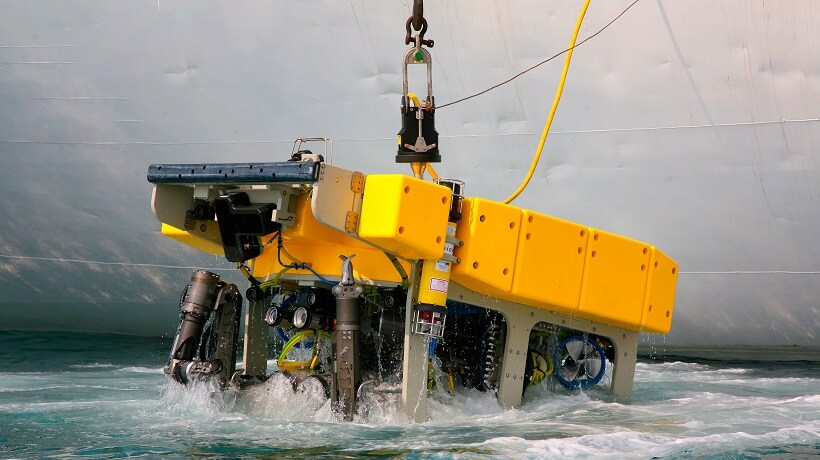Connecting ROV in Underwater Environmental Monitoring Systems
25/12/2566

Background
The global trend toward green energy and the search for new supplies of resources have necessitated an increasing amount of activity in the oceans. Consequently, there is a rising need for nearshore underwater monitoring, which has traditionally been done manually by divers. However, automated or semi-automated systems such as underwater vehicles and cameras would be able to reduce the workload of divers or even replace divers entirely in harsh working environments. Such systems would be able to perform tasks such as underwater pipeline inspections, data collection, and construction work.
System Requirements
- A remotely-operated vehicle (ROV) would perform monitoring and other tasks offshore. The vehicle would be connected to an operator’s interface via cables that are hundreds of meters long.
- The vehicle can move longitudinally, vertically, laterally, and horizontally with a system of propellers, and collected data such as time, bearing, depth, mechanical turntable position, plasma speed, and vehicle speed would be displayed in real-time on a monitor back on shore.
- A video link would give the operator visual feedback, and would allow the operator to move the ROV as well as attached robotic arms as necessary.
Project Implementation
- IMC-150LI: hardened long reach Ethernet extender
- EKI-7710E-2CI: managed Ethernet switch
System Description
This underwater monitoring system involves an ROV with an on-board Advantech IMC-150LI hardened long reach Ethernet extender. The ROV collects data from undersea equipment and, when necessary, performs repairs and maintenance. The IMC-150LI can transmit this data over distances of up to 800 meters through a twisted pair or coaxial cable. The IMC-150LI is installed in an IP67 box, which protects it from the seawater and other harsh environmental conditions, and the Ethernet extender can easily transmit data through the cable back to another IMC-150LI in a control room onshore.
In addition to the IMC-150LI, the control room is also equipped with an Advantech EKI-7710E-2CI managed Ethernet switch, which can be mounted using a DIN rail. The switch is responsible for receiving and managing the data sent by the IMC-150LI devices, thereby allowing staff to oversee and manage the system.
System Diagram

Why Advantech
- The IMC-150LI is ideal for this type of application. It extends the distance of the Ethernet signal to up to 100 meters at 10 Mbps or 500 meters at 100 Mbps over a UTP cable. Furthermore, it can extend the distance of Ethernet to up to 1 kilometer at 10 Mbps or 500 meters at 100 Mbps over a coaxial cable.
- The IMC-150LI’s fast transmission speeds allow data to be transmitted in real time, thus providing the advantages of high reliability and instantaneity. Detected signals from the underwater ROV can be received by onshore operators instantly, and concordantly the operator’s commands can be immediately sent to the ROV offshore.
- The built-in link fault pass through (LFPT) monitoring feature helps to instantly detect losses of signal or signal corruption.
- The IMC-150LI is compact and robust; it is built to industrial-grade standards and is suitable for installation in underwater ROVs, which have strict space and weight limitations.
- The LAN rates and connection types can be selected on the EKI-7710E-2CI.
/EKI-7710E-2C_03_S20151118164144.png)
/EKI-7710E-2CI_S20151118164652.png)
-25/IMC-150LPI_Front-left_Banner20200512162937.jpg)
-25/IMC-150LI_Front-left_Banner20200512161913.jpg)
-25/IMC-150LPC-R_02--_Banner20220111191421.jpg)
